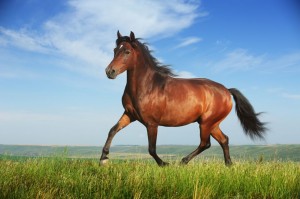
As the weather warms up and mosquitoes become more prevalent, California horse owners are advised to consult their veterinarian to ensure their horse’s vaccination status is current for maximum protection against West Nile Virus.
Even though the disease peaked in California a number of years ago, it remains a risk. In 2017 it was confirmed in 21 California horses, eight of which died or were euthanized. According to California’s West Nile Virus website there were 553 human cases of the disease in the state last year.
“Outbreaks of West Nile Virus are still a risk for horses,” said California State Veterinarian Dr. Annette Jones. “Horse owners should contact their veterinarians as soon as possible to make sure their animals’ vaccination status is current. Vaccination will provide optimal protection against the disease.”
Signs of West Nile Virus include stumbling, staggering, wobbling, weakness, muscle twitching and inability to stand. Horses contract the disease from carrier mosquitoes and are not contagious to other horses or people.
The best way to minimize the threat of West Nile Virus is to control mosquito populations and prevent exposure to them:
• Reduce or eliminate sources of stagnant or standing water that can serve as a breeding ground for mosquitoes, including old tires, buckets, wading pools and other containers.
• Stall horses during peak mosquito periods (i.e., dawn and dusk);
• Use equine-approved mosquito repellants and/or protective horse gear such as fly sheets, masks, and leg wraps;
• Place fans inside barns and stalls to maintain air movement, as mosquitoes cannot fly well in wind.
CDFA is working with the California Department of Public Health to detect and respond to the disease in California. Horses provide an additional sentinel for West Nile Virus detection. For more information click here.


